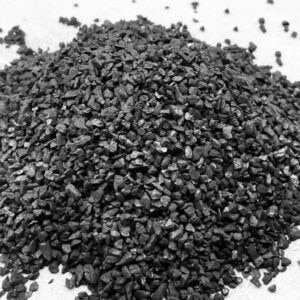-
The right recarburizer can significantly impact metal quality and cost efficiency. Understanding its role is crucial for foundries and steel manufacturers.
-
A recarburizer is an additive used in metallurgy to increase carbon content in molten metal, improving strength and performance. Selecting the right type is essential for achieving desired results.
-
Many buyers struggle with selecting the best recarburizer. Let’s explore its types, benefits, and how to choose the right one.
What Are the Different Types of Recarburizers?
-
Not all recarburizers are the same. Each type has unique characteristics that impact efficiency and quality.
-
The main types include calcined petroleum coke (CPC), graphite petroleum coke (GPC), and anthracite coal. The choice depends on carbon content, absorption rate, and application.
Key Comparison of Recarburizers
| Type | Carbon Content (%) | Absorption Rate | Application |
|---|---|---|---|
| Calcined Petroleum Coke (CPC) | 98-99 | High | Steelmaking, foundries |
| Graphite Petroleum Coke (GPC) | 98.5-99.5 | Very High | High-end castings, ductile iron |
| Anthracite Coal | 80-92 | Moderate | General casting applications |
- 하소 석유 코크스(CPC): Common in steel and iron production, CPC offers high purity and a reliable absorption rate.
- 흑연석유코크스(GPC): Preferred for precision casting and ductile iron, GPC has a higher absorption efficiency.
- Anthracite Coal: A cost-effective option with lower carbon purity, useful in general applications.
How to Choose the Best Recarburizer for Your Application?
-
Picking the wrong recarburizer can lead to material defects and increased costs. What should buyers focus on?
-
The key factors include carbon content, sulfur level, ash content, and absorption rate. A high-quality recarburizer improves efficiency and reduces waste.
Factors to Consider
- Carbon Purity: Higher purity ensures better performance in molten metal.
- Absorption Rate: Determines how effectively the material integrates into the molten metal.
- Sulfur and Ash Content: Lower levels are better to avoid contamination.
- 입자 크기: Affects how quickly the recarburizer dissolves and integrates into the melt.
Why Is Recarburizer Crucial for Foundries and Steel Production?
-
Foundries depend on consistent carbon content for metal quality. How does a recarburizer help?
-
Recarburizers ensure precise carbon levels in molten metal, preventing defects like shrinkage and weak casting structures.
Key Benefits
- Improves Mechanical Properties – Enhances metal strength and durability.
- Reduces Production Costs – Optimizes carbon usage, lowering raw material expenses.
- Enhances Energy Efficiency – Faster melting times and better heat absorption.
What Are the Best Practices for Using Recarburizers?
-
Even the best recarburizer won’t work effectively without proper application.
-
For optimal results, add recarburizer early in the melting process, ensure proper mixing, and monitor carbon content with real-time analysis.
Best Practices for Foundries
| Practice | Benefit |
|---|---|
| Pre-Melting Addition | Ensures better carbon absorption |
| Proper Mixing | Prevents uneven distribution |
| Carbon Content Monitoring | Maintains consistent metal quality |
결론
Choosing the right recarburizer ensures high-quality metal production, cost savings, and efficient operations.
행동을 요구하다
Need a high-quality recarburizer supplier? Contact us now at [email protected] or reach out via 왓츠앱 (+86 18202528603).


